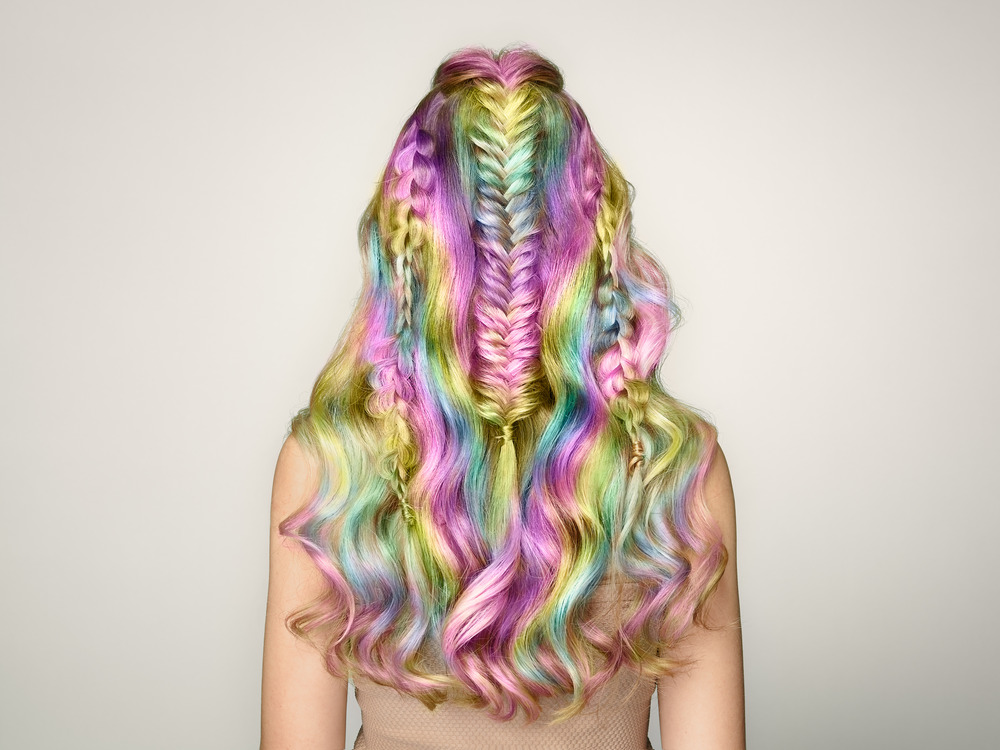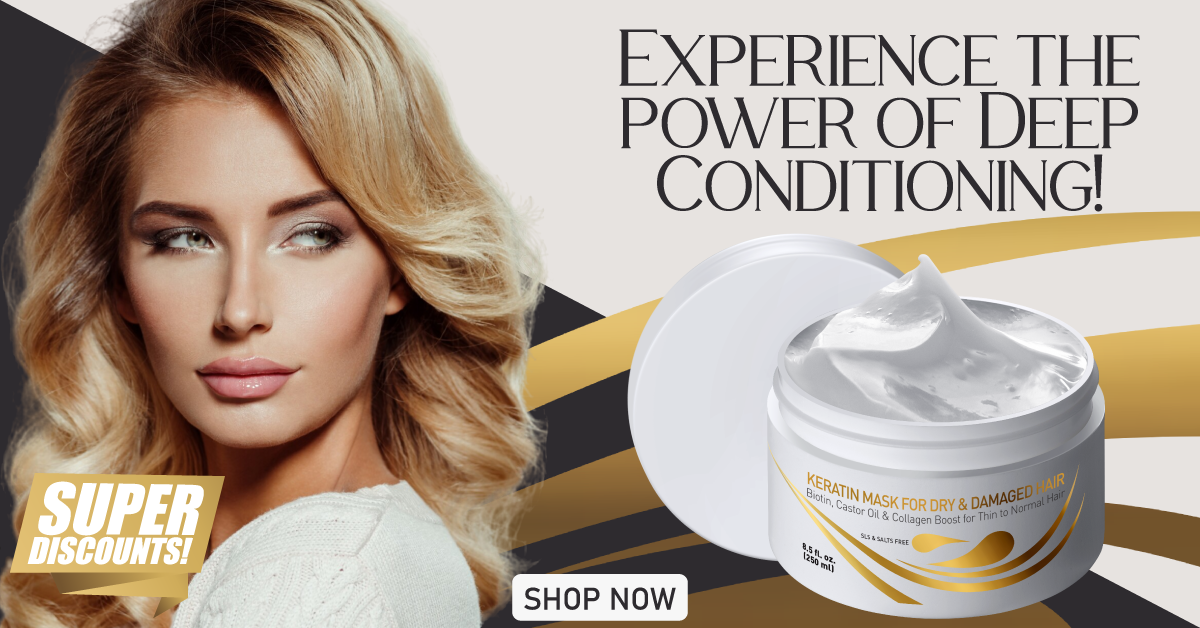
Making your shampoo is a great way to save money and keep your hair healthy. It’s also more environmentally friendly than buying commercial products.
But when you have colored hair, it can be hard to know if the homemade shampoo is safe for your dyed locks. Fortunately, several natural ingredients will nourish and protect your hair while still providing gentle, effective cleansing.
Why Do You Make Your Natural Shampoo?
There are many reasons why you should consider making your own shampoo for colored hair. The main reason is that it’s the best thing you could do for your hair.
Let’s learn why.
- Color-treated hair needs special attention and care. Not all ingredients or products work, and that’s why store-bought shampoo for colored hair costs more. When you switch to homemade shampoo, it’s cost-effective.
- Homemade shampoo is easy and made with natural ingredients and has none of the harsh chemicals like commercial shampoos.
- Homemade shampoos are side-effective and free from harsh or harmful ingredients like sodium lauryl sulfate, carcinogens, ingredients that affect hormone levels, petroleum jelly, paraffin, salt, alcohol, preservatives, additives, etc.
- You can tweak a homemade recipe according to your requirements and preferences, as they can be customized.
- You can prepare a batch that’s as small or as large as you want it, modify, work around a recipe, try out different stuff, and decide what you like best or what suits you best.
Is Homemade Shampoo Safe for Colored Hair?

Yes, homemade shampoos are safe for colored hair when the ingredients and recipes are chosen with care and intended for use on color-treated hair.
Homemade Shampoo for Colored Hair
There are many options when considering homemade shampoo for colored hair. If you’re looking for a very simple recipe, let’s take a look at this shampoo recipe that uses baby shampoo as the base.
What You’ll Need
- Baby Shampoo – 2 – 3 Tbsps.
- Cognac Liquor – 1 Tbsp.
- Raw Honey – 1/4 Tsp.
- Lavender Essential oil – 2 drops
Directions
- Add all the ingredients to a mixing bowl and stir to combine.
- Transfer to an old shampoo bottle.
- Done!
How to use?
- You can use this for washing your hair and scalp like you do any commercial shampoo.
- Don’t forget your conditioner, whether you have thin or thick hair.
- Air dry and style as usual.
Notes
Remember, unlike natural hair, color-treated hair doesn’t go well with certain essential oils. Lavender is good, but peppermint oil, cedar, rose, patchouli, vanilla, or even rosemary can darken hair color, while certain oils like tea tree essential oil or citrus oils can lighten it. So, choose accordingly.
You can use castile soap instead of baby soap for this recipe. Castile soap is equally gentle and a suitable substitution for shampoo.
You can finish with apple cider vinegar rinse to add shine to colored hair.
Coconut Milk Shampoo
With a tropical smell and feel, coconut milk shampoo can do wonders for your hair. Also, coconut milk can improve hair care and soothe colored hair that’s often stressed or damaged. Let’s look at the recipe, shall we?
What You’ll Need
- Castile Soap – 2 Tbsps.
- Coconut Milk – 2 Tbsps.
- Coconut Oil – a few drops
- Olive Oil – a few drops
- Lavender Essential oil – 3 Drops
Directions
- Break open a mature coconut and remove the meat from the shell.
- Cut into small pieces and grind it, adding a little water.
- Filter the coconut milk and repeat the process to get another batch of thinner milk.
- You can use both or mix both and use.
- Take 2 Tbsp. of the thick milk extracted the first time and add it to a mixing bowl.
- If you’re not using liquid castile soap – scrap 2 tbsps of castile soap and add it to a bowl. Add some water, soak the shavings and mix to dissolve it. Now add it to the mixing bowl with other ingredients.
- Add all the other ingredients to this – castile soap, olive oil, coconut oil, and lavender essential oil.
- Once combined, transfer to a shampoo dispenser.
- Done!
How To Use
- Massage this natural shampoo to your wet hair and scalp and gently work it through your strands.
- Wait for a couple of minutes and rinse off.
- Finish off with a conditioner and air dry.
- Style as usual.
Cornstarch and Baking Soda Shampoo
If you have oily hair, this homemade shampoo is really beneficial to get rid of greasy hair without stripping off the scalp’s natural oils. You can make using this shampoo recipe part of your hair care routine to improve hair care.
What You’ll Need
- Baking Soda – 1 Tbsp.
- Cornstarch – 1 Tbsp.
Directions
- In a mixing, add both baking soda and cornstarch and mix well.
- Once combined, transfer to a salt sprinkler. Done!
How To Use
- Sprinkle the dry shampoo on your scalp – part small portions and sprinkle the dry shampoo along the parts.
- Work the shampoo through your hair and scalp using your fingers or hair brush.
- Once done, use your hairbrush to get rid of any excess shampoo by brushing your hair well.
- Done, style as usual.
Notes
You can add Lavender or other essential oils of your choice when you want to add aroma to the recipe.
You can tweak the recipe according to your requirements and hair color. For example, You can add a dash of cocoa powder or cinnamon powder for dark hair. It also smells wonderful when you add both or any other of these two ingredients.
Though the recipe is for single use, you can prepare larger batches as dry shampoo has a longer shelf life.
You can use dry shampoo between washes to push a day or two before having to wash your hair or when you need a quick spruce up and don’t have time, but this is a natural solution that works instead of harming hair spray or other similar products.
Baking soda tends to lighten a few colors. Check and see if it lightens your hair color, and then decide if you want to use it. Once in a while, it shouldn’t be a problem, though.
Aloe Vera Shampoo
Aloe vera is hydrating and can soothe and hydrate color-treated hair. Adding aloe vera gel to your shampoo recipe will take it up a notch by making hair and scalp healthier.
What You’ll Need
- Aloe Vera Gel – 2 Tbsps.
- Chickpea Flour – 2 Tbsps.
- Raw Honey – 1 Tsp.
- Fenugreek Powder – 1 Tsp.
Directions
- Add all the ingredients to a mixing bowl.
- Add more water, if needed, to make a thick paste.
- Done!
How To Use
- Apply to wet hair and scalp, gently massaging and working the natural shampoo onto your scalp.
- Rinse off and follow up with apple cider vinegar rinse for shiny locks.
Notes
This natural shampoo is ideal for those with lighter hair colors as this recipe can lighten darker colors.
Colored hair doesn’t have to be dull, lifeless, and weak. If you’re using this regularly, it’ll make your hair stronger and shinier.
Lemon and Cucumber Shampoo
Lemon is a great cleanser, and cucumber is a gentle nourisher. Combining these two ingredients can give you a natural shampoo that’s very effective for hair care.
What You’ll Need
- Lemon – 1
- Cucumber – 1
Directions
- Peel the cucumber and the lemon.
- Run it in your mixer to get a runny and smooth blend.
- Done!
- Transfer to a shampoo bottle or spray bottle (if you’re going to sieve and use the juice only)
How To Use
- Apply the homemade shampoo you’ve prepared on your hair and scalp.
- You can apply this on wet hair or dry hair.
- Cover your head with a shower cap and let it sit for a few minutes before rinsing off.
- Finish with ACV rinse for shiny hair.
Notes
You can also use lemon juice and cucumber juice if you prefer to have a spray consistency.
You can add a drop of tea tree oil for added aroma and to combat scalp issues and excess sebum levels.
You can add baking soda to the shampoo or finish with a baking soda rinse.
Essential Oils for Fragrance

- Essential oils are a great way to add aroma and nourishment or benefits to your homemade shampoo. You can choose the oils according to your hair and scalp needs, customize the recipes, and make your own shampoo and conditioner for healthy hair and scalp.
- Peppermint oil has an invigorating aroma and can also combat an itchy scalp, promote hair growth, etc. Improved hair growth is a great benefit for colored hair.
- Adding lavender oil to your shampoo recipe can give stress-relieving and calming floral fragrance, besides combatting hair and scalp issues common with colored hair.
- Chamomile has a subtle aroma and also soothes itchy and irritated scalp.
These are a few examples of how you can use your favorite essential oils to add fragrance to your homemade shampoo or even body wash.
Most essential oils should be combined with carrier oils like olive oil to get the most out of them.
Using Your Homemade Shampoo On Colored Hair
Today, many have resorted to preparing homemade shampoos and avoid regular shampoos that have harmful chemicals. The least these ingredients can do is leave you with dry hair, damaged hair, irritated scalp, etc., while carcinogens can lead to major health issues.
While your hairdresser might not educate you on the downsides of using heat or chemicals for styling your hair, some easy and simple changes can go a long way in nurturing your hair back to health. That’s the main reason we’re switching to DIY for our hair care, right?
By using natural shampoos or shampoo bars prepared at home is healthy and cost-effective and doesn’t leave you with adverse side effects. By using ingredients that are usually in every home, like baking soda, castile soap, vegetable glycerin, mild liquid soap, jojoba oil, diluted lemon juice, vitamin E oil, apple cider vinegar, coconut milk, essential oil, olive oil, tea tree oil, etc., you can come up with a shampoo recipe that works for your needs and requirements.
You can customize the shampoo recipes according to your requirements, considering factors like whether you have curly hair, very thick hair, colored hair, baby fine hair, highlighted hair, thick hair, very fine hair, or issues like stunted hair growth, frizzy hair, dry hair, oily hair, grey hair, sensitive skin, hair loss, etc.
Needless to say, a regular shampoo might not work on colored hair, but there are options when you want to prepare your own shampoo for color-treated hair. Choose a shampoo recipe with ingredients that promote hair growth, like coconut milk, clarifying agents like baking soda, or different essential oil options that can add value to your natural shampoos and whatnot.
Tips for Using Homemade Shampoo on Colored Hair
- Choose a shampoo recipe that is intended for colored hair, uses gentle ingredients like castile soap, and works on your hair follicles and hair strands.
- Just make sure the shampoo recipes intended to be used on hair strands don’t negatively affect colored hair. It’s important more so when substituting an essential oil called for in your shampoo recipes.
- Colored hair is usually stressed or damaged, manifesting as dry hair, frizzy hair, etc. Consider using soothing and repairing ingredients like coconut milk for your hair.
- You can add baking soda to make your shampoo recipe a clarifying one. Baking soda can get rid of scalp accumulation, dead cells, etc.
- When using baking soda, make sure not to go overboard. Baking soda can open up hair shafts and cause certain colors to fade. So note if there’s any fading when you use it and plan accordingly.
- Castile soap is gentle and is a great cleanser. It can effectively replace store-bought shampoo recipes.
- Egg is another surfactant that you can consider when swapping your shampoo for a DIY one.
- Most shampoos intended for colored hair include lactic acid. You can use yogurt or milk to get lactic acid into your recipes.
- Apple cider vinegar does leave your hair shiny and gets rid of scalp accumulation, but it can also cause certain hair colors to fade due to oxidization. Check on the same once your hair dries and minimize your usage if it causes your color-treated hair to fade.
- Most DIY shampoos don’t leave your hair dry, but it’s good to use a conditioner.
- Try getting plain castile soap or liquid castile soap for your DIY recipes. That way, you don’t have to worry about what aromas or essential oils will pair with the existing aroma.
Natural Conditioners to Pair with Your DIY Shampoo
Honey, coconut oil, olive oil, guar gum, and apple cider vinegar are a few natural conditioners you can pair with your shampoo or even use with other complementary ingredients to prepare your own conditioner.
Tips To Maintain Healthy Color-Treated Hair
- Cleansing alone doesn’t keep your hair healthy. Color-treated hair needs additional care, nourishment, and pampering. Have a hair care routine that includes nourishing treatments for hair.
- Don’t ignore your scalp – the scalp is where the work for hair growth, repair, and sustenance begins. Nourishment enters hair follicles through your scalp. So don’t apply your treatments or masks on your hair alone, but include your scalp.
- Consider rinsing your hair once a week with nourishing rice water or green tea rinse, conditioning rose water rinse, or sprucing coconut water rinse, etc.
- A good hair pack once a week that includes nourishing ingredients like eggs, banana, avocado, etc., can improve the health of your hair and scalp.
- Trim your hair at regular intervals to keep split ends at bay.
- Avoid style or heat treatments and products whenever possible – dryer, styling gels or sprays, etc. You can use natural alternatives where applicable, in turn reducing considerable stress on your hair and scalp.
- Pamper your hair and scalp – they’re stressed enough with the coloring treatment. A deep conditioning pack can do wonders for your hair and health.
- Have a healthy diet and include nutrients that particularly help with hair care. Biotin, zinc, iron, etc., are a few examples of nutrients you should include in your diet. Don’t forget your antioxidants, proteins, and Omega 3 Fatty Acids!
- Don’t use extremely hot water on your hair. Consider using lukewarm, room temperature, or warm water.
- Don’t wear your hair too tight. Choose relaxed hairstyles.
- Don’t comb when your hair is wet.
- Detangle with wide-toothed detangling combs or gently detangle with your fingers. You can detangle with your fingers when slightly wet, but don’t use a comb on wet hair.
- Avoid exposure to scorching sun, environmental pollution, chlorine, etc.
Conclusion
Not everyone can DIY skin or hair care products. Nowadays, life is hectic, and time runs away from us.
Most of us are working double jobs, and needless to say, women have more responsibilities on the home front. So, don’t beat yourself up if you don’t have time to prepare homemade shampoos or other hair care recipes.
Check out Vitamins Revive Store to know what products they have. They have great options, and you should find one that fits your needs.
Remember: you’re worth it! As always, feel free to write to us with any questions, concerns, feedback, or requests.
We love hearing from our readers. Do let us know how you liked these recipes and what worked for you.









